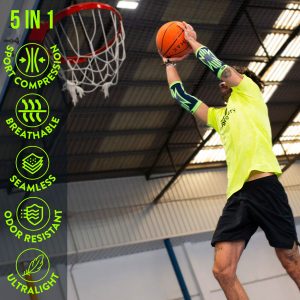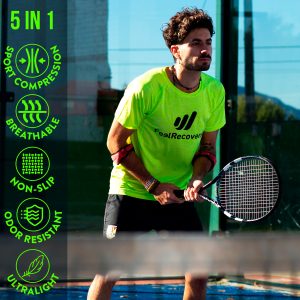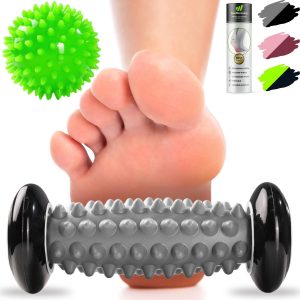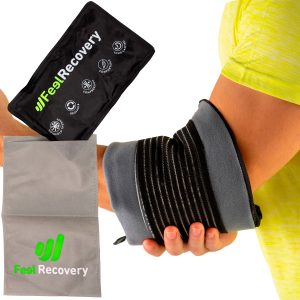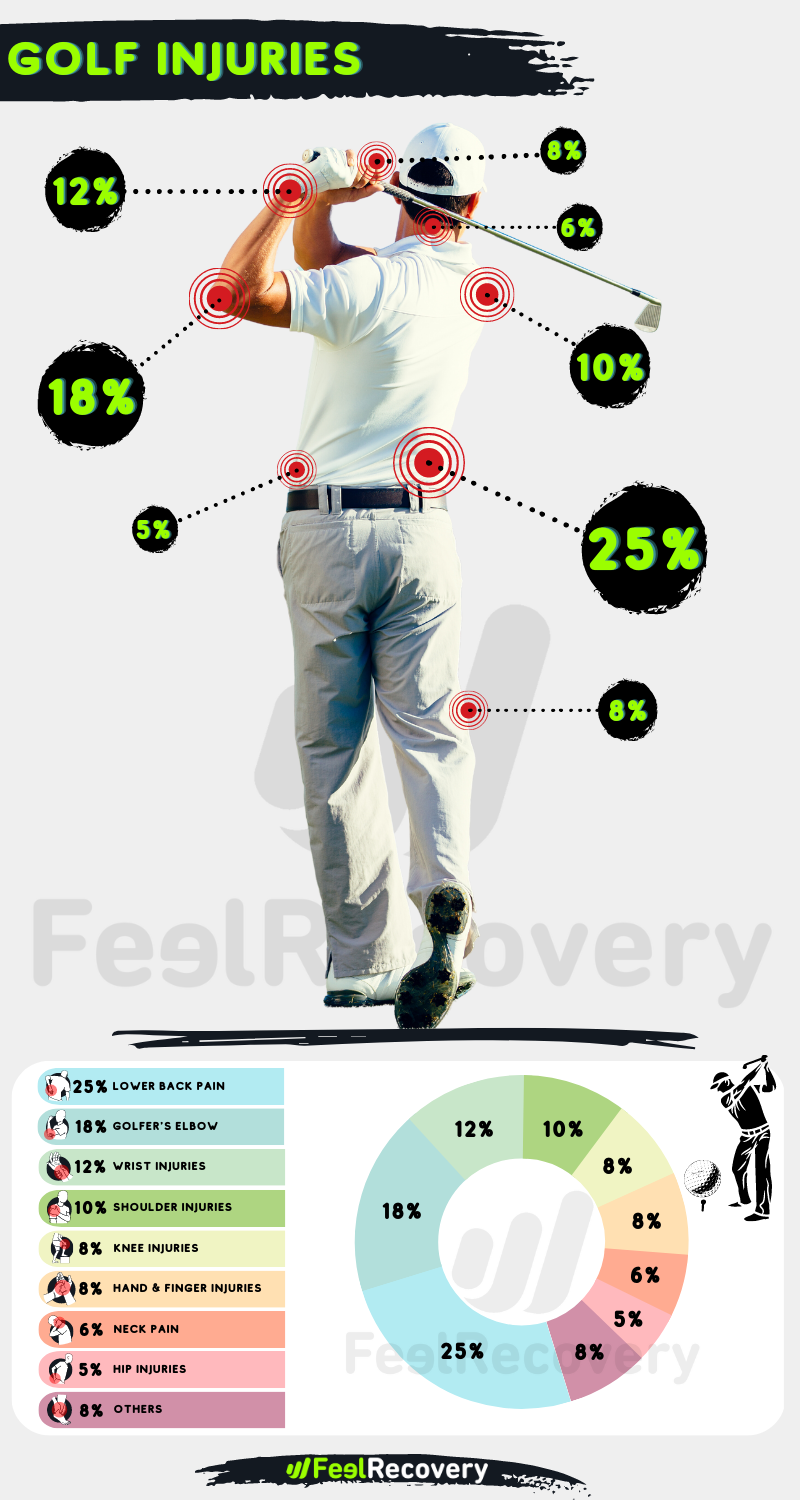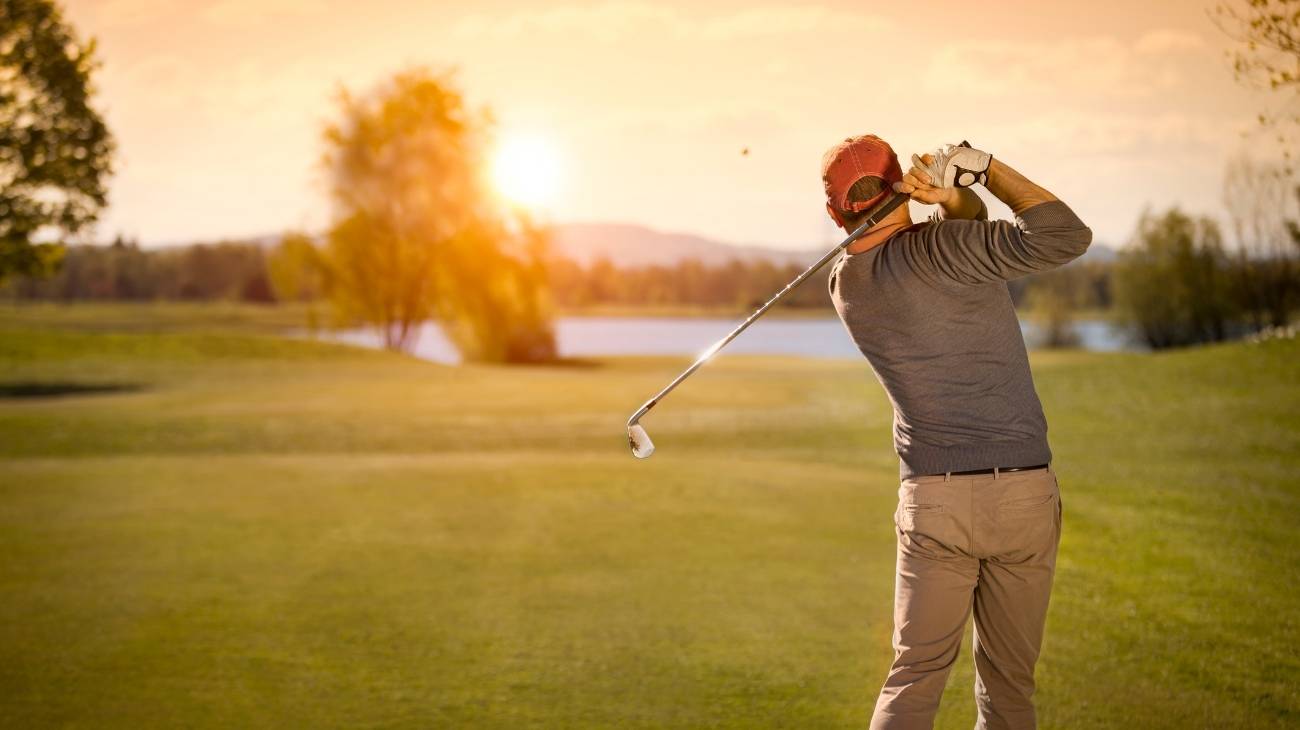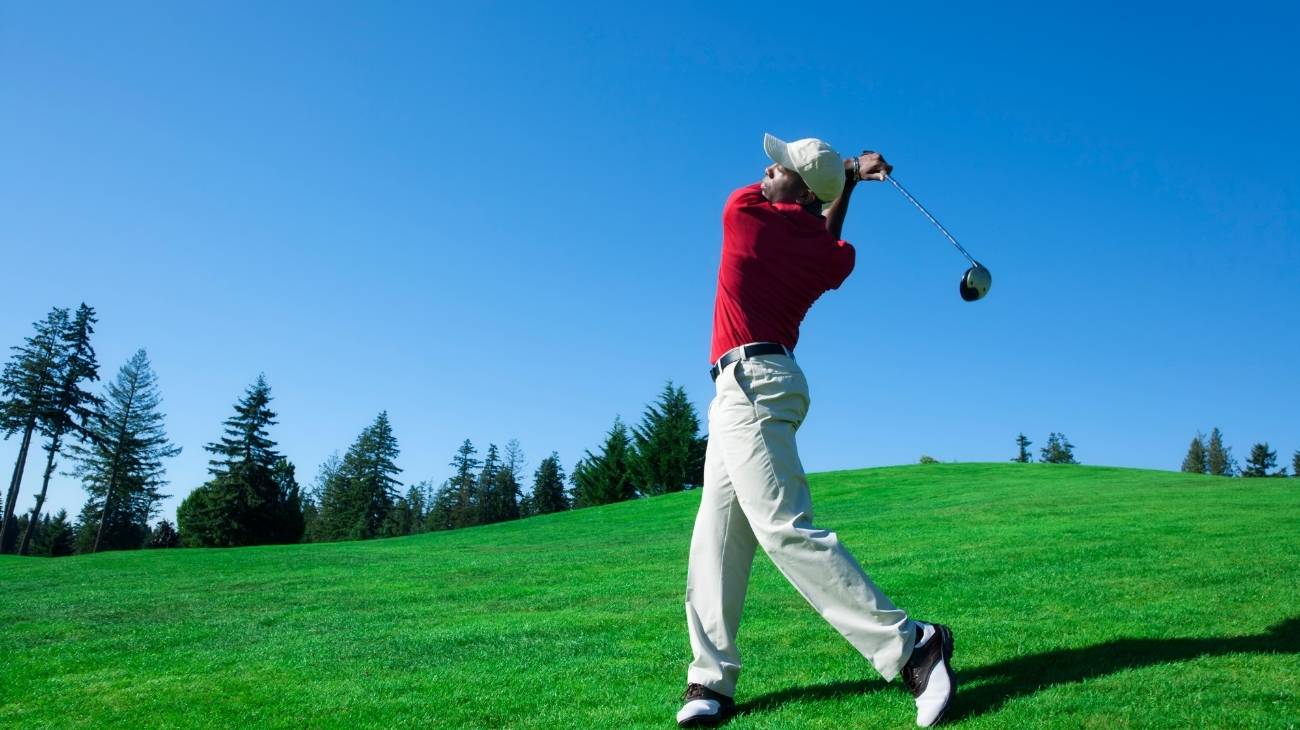Being out with an injury is something that no golfer in the world wants, but not just because of not being able to play, but also because of the limitations it will cause to your daily life due to the pain and discomfort in the injured area.
This is why we have listed the most effective prevention methods to avoid golf injuries so that playing your favourite sport does not have negative consequences in any way.
What are the most common types of injuries when playing golf?

A recent study in the UK estimates that golfers have a 66% chance of being injured, compared to a rugby player, who has a 61% chance.
- Epicondylitis: This is an inflammation of the tendons located in the arm that connect it to the elbow. It is known as "tennis elbow", but it also affects golfers. When the injury occurs, just touching the area will cause severe pain.
- Subluxation of fingers: Subluxation occurs when the bones of the fingers are partially dislocated and usually does not require surgery. Almost all dislocations are generated in the middle joint by force and poor technique when gripping the club during the swing.
- Tendonitis in the wrist: When there are repetitive movements, the tendons often collide strongly with the rest of the soft tissues of the wrist, which generates inflammation and pain. Wrist tendonitis results in redness, weakness and a moderate rubbing sound when you move the joint. Overwork is the reason for this ailment.
- Carpal tunnel syndrome: This is inflammation of the median nerve that runs through the wrist. It starts with tingling and then progresses to mild pain until it affects your daily life. If the discomfort is addressed early, it will probably not require corrective surgery.
- Ganglionoma of the wrist: Repeated stresses cause the wrist joint to become overloaded with tension, creating lumps of tissue known as ganglions. They even appear in the ankles and feet. It is a stress injury because so much use is made of that part of the hand that there is no chance of a good recovery and the body releases a fluid to prevent it from becoming irritated.
- Acromioclavicular arthropathy: This is an injury caused by repetition of the same movement such as golf swings. It is a temporary injury to the shoulder joint. Both joint wear and tear and intense blows affect the correct functioning of the joint, which is the most mobile joint in the human body.
- Herniated disc: With repeated twisting in the back, the discs in the lower back begin to slip out of place and put pressure on the nerves. This causes pain in the lower back. Not all of these herniations require surgery and non-invasive methods are usually sought to resolve them.
- Anterior cruciate ligament injury: The knee joint has two ligaments that cross and provide stability. Although they are strong, they are torn by overwork during twisting. With every hit on the ball there is a demand on the knee and these ligaments are the first to react.
- Achilles tendon tendonitis: This is a localised pain above the heel, generated by the overload of energy in the explosive movements of golf. The tendon becomes inflamed and walking becomes difficult. This tendon connects the heel to the calf muscles so the discomfort spreads to the foot.
Best products for golf injury recovery
Bestseller
-
2 Elbow Compression Sleeve (Black/Gray)
$19.95 -
2 Elbow Compression Sleeve (Green/Navy)
$19.95 -
2 Elbow Compression Sleeve (Pink/Bordeaux)
$19.95 -
2 Knee Compression Sleeve (Black/Gray)
$19.95 -
2 Knee Compression Sleeve (Green/Navy)
$19.95 -
2 Knee Compression Sleeve (Pink/Bordeaux)
$19.95 -
2 Tennis Elbow Brace (Black/Gray)
$14.95 -
2 Tennis Elbow Brace (Green/Navy)
$14.95 -
2 Tennis Elbow Brace (Pink/Bordeaux)
$14.95 -
Acupressure Mat and Pillow (Black/Gray)
$49.95 -
Acupressure Mat and Pillow (Green/Navy)
$49.95 -
Acupressure Mat and Pillow (Pink/Bordeaux)
$49.95 -
Acupressure Pillow (Black/Gray)
$29.46 -
Acupressure Pillow (Green/Navy)
$29.46 -
Acupressure Pillow (Pink/Bordeaux)
$29.46 -
Back Support Belt (Black)
$34.95 -
Back Support Belt (Green)
$34.95 -
Back Support Belt (Pink)
$34.95 -
Foot Massage Roller for Plantar Fasciitis (Black)
$19.95 -
Foot Massage Roller for Plantar Fasciitis (Green)
$19.95 -
Foot Massage Roller for Plantar Fasciitis (Pink)
$19.95 -
High Density Foam Roller for Muscle (Black/Gray)
$29.95 -
High Density Foam Roller for Muscle (Green/Navy)
$29.95 -
High Density Foam Roller for Muscle (Pink/Bordeaux)
$29.95 -
Ice Massage Roller Ball (Black)
$39.95 -
Ice Massage Roller Ball (Green)
$39.95 -
Ice Massage Roller Ball (Pink)
$39.95 -
Microwave Heating Pad for Back Pain Relief (Extra Large) (Hearts)
$29.95 -
Microwave Heating Pad for Back Pain Relief (Extra Large) (Oxford)
$29.95 -
Microwave Heating Pad for Back Pain Relief (Extra Large) (Sport)
$29.95 -
Microwaveable Heating Pad for Pain Relief (Hearts)
$19.95 -
Microwaveable Heating Pad for Pain Relief (Oxford)
$19.95 -
Microwaveable Heating Pad for Pain Relief (Sport)
$19.95 -
Pack 2 In 1 Foam Roller High + Soft Density (Black/Gray)
$29.95 -
Pack 2 In 1 Foam Roller High + Soft Density (Green/Navy)
$29.95 -
Pack 2 In 1 Foam Roller High + Soft Density (Pink/Bordeaux)
$29.95 -
Sacroiliac Support Belt (Black)
$24.95 -
Sacroiliac Support Belt (Green)
$24.95 -
Sacroiliac Support Belt (Pink)
$24.95 -
Shoulder Support Brace (Black)
$24.95 -
Shoulder Support Brace (Green)
$24.95 -
Shoulder Support Brace (Pink)
$24.95 -
Soft Density Foam Roller for Recovery (Black)
$29.95 -
Soft Density Foam Roller for Recovery (Green)
$29.95 -
Soft Density Foam Roller for Recovery (Pink)
$29.95 -
Trigger Point Massage Stick (Black)
$14.95 -
Trigger Point Massage Stick (Green)
$14.95 -
Trigger Point Massage Stick (Pink)
$14.95 -
Wrist Brace (Black/Gray)
$19.95 -
Wrist Brace (Green/Navy)
$19.95 -
Wrist Brace (Pink/Bordeaux)
$19.95
List of injury prevention methods for golfers
Although golf is a social sport, it is also a sport with specific demands that can lead to injuries to any part of the body. Because we never want you to be off sick with an injury, here are the most effective methods of prevention in golf.
Warm up properly
When muscles, tendons and ligaments are not warmed up, the risk of discomfort increases and will force you to rest for several days. Walking is a good option to prepare the body before playing, remember that hitting the ball is achieved successfully with the support of all the joints.
In addition to that you should stretch all your muscles, as well as joint mobility, first making arm movements back and forth, then shoulder circles and finally give mobility to the trunk swinging from one side to the other. With a session of these simple exercises 10 minutes before starting we will be almost ready.
If you are not an expert and have not yet mastered a good technique, doing swing simulations will be essential as the main cause of injuries in golf is hitting with poor technique. In this way you will avoid a lot of ailments.
Finish your training with a cool down
At the end of a day of several holes, our body will have accumulated a huge amount of tension throughout the day, so the last thing we can do is sit down to rest right at the end as this will be counterproductive. The right thing to do is to cool down and gradually bring the body to a state of rest.
What is usually done in golf clubs is to perform a similar stretch to the warm-up sessions in which we release tension in the shoulder, hip, knee and elbow joints by moving the arms forward and backward and other simple exercises to stretch the ligaments and muscles.
We can then walk back from the hole where we finished our game to the recreation area of the club and sit down for a drink to rehydrate us while we chat about our game with our friends.
Good nutrition and hydration
Nutrition is essential for any professional or amateur golfer. Although it is not as demanding a sport as football or basketball, the truth is that in a recreational game of more than 10 holes you can burn almost 1000 calories.
Therefore, a golfer should have a caloric intake of at least 2200 calories a day, although this will depend on their body weight and build, although the diet should be balanced in the main macronutrients which are fats, carbohydrates and proteins.
In addition, to keep muscles and joints strong, foods rich in proteins, vitamins and minerals (iron, zinc and magnesium) can be consumed, which are excellent for this purpose and can be found in pulses and legumes.
As for hydration, we should drink a constant glass of water throughout the day without letting it make us thirsty, as this is the first sign of dehydration and this will make us lose concentration in our game and feel more tired.
Improve your fitness
There is no physical standard for a golfer and in principle technique is more important than build, but it is important to have healthy lifestyle habits and do other sporting activities so that our muscles and joints can withstand the stress generated in a game of 18 holes in which we could swing up to 70 times.
It is advisable to practice other sports such as swimming and running to improve our aerobic capacity. Both are exercises that give mobility to all the joints of the body. Being overweight is not healthy in any case, as it will damage your joints and your general health.
Sports massage
A good sports massage aims to drain toxins accumulated during a game of golf, prevents muscles from contracting and generates a feeling of relaxation in golfers. Its use is not recommended when there are fractures in which the tissues must heal on their own with immobilisation.
The most commonly used sports massage techniques are kneading and percussion, which are ideal movements for draining accumulated stress from muscles and joints. Although it is not always necessary for them to be applied by an expert, it is better if they are done by a third party as this generates a more pleasant sensation.
Use of heat and cold therapies
Ice and heat have different effects on damaged tissues. Ice lowers the blood supply and causes the swelling to start to subside, as well as the pain and bruising that appears on the skin.
Heat allows nutrients to be better assimilated into the body, speeds up muscle recovery and keeps tissues ready for intense activities
Use of compression garments
Compression garments are rare in golf, but they can be used to enhance sporting performance, maintain optimal body temperature without sweating, and reduce the chance of injury by protecting joints.
They should always be on hand for first aid use, as compression is a way of controlling inflammation. The best garments in this regard will be compression splints, elbow, wrist and knee braces.
Use of acupressure therapies
The body has specific points that allow it to drain accumulated tension from golf games. A certified therapist will be able to make you feel better with the use of your fingers and palms.
Acupressure is similar to acupuncture, but does not use needles to be applied, although they share the same technical and holistic principles of draining energy and stress through specific points distributed throughout the body.
Use of thermotherapy and cryotherapy
This is the use of heat and cold in a more advanced way and in search of long-term results. Both address chronic injuries in order to avoid possible surgery. Thermotherapy reaches up to 50°C to relieve pain, improve muscle endurance and open capillaries in the skin. Cryotherapy kills harmful cells in the body with temperatures of -130 °C. Both therapies must be applied by experienced physiotherapists.
Use of good equipment
Although golf attire may appear to have been created to look smart, it is clothing that serves 100% sporting functions. Both the shirt and trousers should encourage energy transfer with explosive twisting movements. Shoes have cleats, allowing the feet to grip the surface better, providing comfort, waterproofing and stability.
Although it may seem obvious, it is also important to have all the necessary clubs for different shots and to know how to choose the right ones, because if, for example, you use a wood or an iron to make a putt, you could injure yourself and the shot will not be good.
References
- Thériault, G., & Lachance, P. (1998). Golf injuries: an overview. Sports medicine, 26, 43-57. https://link.springer.com/article/10.2165/00007256-199826010-00004
- McCarroll, J. R. (1996). The frequency of golf injuries. Clinics in sports medicine, 15(1), 1-7. https://europepmc.org/article/med/8903705
- McHardy, A., Pollard, H., & Luo, K. (2006). Golf injuries: a review of the literature. Sports Medicine, 36, 171-187. https://link.springer.com/article/10.2165/00007256-200636020-00006
- Batt, M. E. (1992). A survey of golf injuries in amateur golfers. British journal of sports medicine, 26(1), 63-65. https://bjsm.bmj.com/content/26/1/63.short
- Edwards, N., Dickin, C., & Wang, H. (2020). Low back pain and golf: A review of biomechanical risk factors. Sports Medicine and Health Science, 2(1), 10-18. https://www.sciencedirect.com/science/article/pii/S2666337620300068
- Parziale, J. R., & Mallon, W. J. (2006). Golf injuries and rehabilitation. Physical Medicine and Rehabilitation Clinics, 17(3), 589-607. https://www.pmr.theclinics.com/article/S1047-9651(06)00028-3/fulltext
- Brandon, B., & Pearce, P. Z. (2009). Training to prevent golf injury. Current sports medicine reports, 8(3), 142-146. https://journals.lww.com/acsm-csmr/Fulltext/2009/05000/Training_to_Prevent_Golf_Injury.00011.aspx
- Fradkin, A. J., Cameron, P. A., & Gabbe, B. J. (2006). Opportunities for prevention of golfing injuries. International journal of injury control and safety promotion, 13(1), 46-48. https://www.tandfonline.com/doi/abs/10.1080/17457300500167693
- Metz, J. P. (1999). Managing golf injuries: technique and equipment changes that aid treatment. The Physician and Sportsmedicine, 27(7), 41-56. https://www.tandfonline.com/doi/abs/10.3810/psm.1999.07.917
- Lehman, G. J. (2006). Resistance training for performance and injury prevention in golf. The Journal of the Canadian Chiropractic Association, 50(1), 27. https://www.ncbi.nlm.nih.gov/pmc/articles/PMC1839980/



